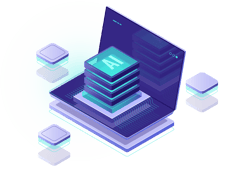Tableau Conference 2025 | Know Before You Go
If you’re a data enthusiast, analytics professional, or just someone curious about Tableau’s latest innovations, the Tableau Conference 2025 is your...

2023 is just around the corner, and with it comes a whole new set of data analytics trends. The last decade has seen some truly incredible innovations in the data analytics field - from big data to machine learning to artificial intelligence. What will the next ten years bring?
Here are the top five data analytics trends we can expect in 2023.
Organizations are losing millions of dollars on misguided business decisions due to poor data quality and ungoverned data processes. People lose trust quickly, and it’s an uphill battle to regain their confidence in insights when there is a history of mismanaged data inputs. Poor data quality directly leads to decreased end-user adoption of data-driven decision-making.
If people can’t trust the raw data inputs, why would they trust the data-driven recommendations?
In recent years, there has been a growing focus on data catalogs, governance, and data quality - as evidenced by the explosion of data catalog vendors like Atlan and Alation. Data catalogs help organizations track and manage data by providing an inventory of data assets across a company and guiding people in discovering the right data for relevant analytics and business use cases.
These tools are essential for ensuring that data is accurate and consistent across different systems. However, they also require a significant investment of time, resources, and commitment to see through the entire initiative. As organizations increasingly rely on data to make decisions, it is critical that they invest in data governance and data quality initiatives. By doing so, they can ensure that their data is reliable and actionable, providing a foundation for making informed decisions.
These days, it seems like everyone is talking about artificial intelligence and machine learning. And with good reason: these cutting-edge technologies are transforming the way we live and work with increasingly predictable outcomes.

Data analytics is one area that has been particularly leading the rise of AI and machine learning. Companies are now using AI tools to glean insights from data that would have been impossible to obtain just a few years ago - without a team of expensive data scientists.
As data becomes more complex and voluminous, businesses are turning to AI and machine learning to help them make sense of it all. And while our educational systems continue to train data scientists and Python becomes more prevalent as a popular programming language, the next hurdle is answering simple questions like ‘what can we actually do with this power.’
2023 will be the year that software vendors and data science leaders will be hyperfocused on clarifying the business goals of AI use cases and packaging outcomes in an easier way. AI and machine learning will be more approachable to all levels of the organization as industry use cases are pre-packaged and plug-and-play.
Dataiku is at the forefront of this trend, providing a powerful platform for data scientists to build and deploy machine learning models. With Dataiku, you can easily build complex machine-learning models with just a few clicks - even without formal data science training. They are helping predictive models actually get in front of business users to drive tangible business outcomes.

With so much data available, businesses need platforms that can store and manage it all effectively. Over the last few years, the technology and tools have exploded - and buyers are left to piece together the modern data stack across 4+ vendors for any substantial digital transformation.
A perfect example is the growing ISV ecosystem around the cloud computing industry leader, Snowflake. Built for the cloud, Snowflake delivers the performance, concurrency, and simplicity needed to store and analyze data. To both retrieve and unlock data within Snowflake, other vendors are needed for a complete implementation, and buyers are leaning on industry whitepapers and implementation partners to choose wisely.
Two of the bigger ELT and data integration vendors are Fivetran and Matillion. Fivetran’s connectors enable organizations to load data from various sources into Snowflake with minimal ELT experience or coding. As a result, organizations can gain insights into their data that were otherwise cumbersome to access. On the other hand, Matillion has recently launched an all-in-one data integration and transformation suite marketing as the Matillion Productivity Cloud. This new Matillion offering seeks to bring disparate modern data stack capabilities under one offering while still leaning on the power and scale of cloud warehouses like Snowflake.
The buying process is complicated and overwhelming for customers as the industry is experiencing an explosion of new capabilities, particularly in cloud data engineering. I anticipate that 2023 will provide us with strategic acquisitions, partnerships, and consolidated platform offerings to ease the burden on the customers. It’s one of the top reasons customers of DataDrive’s Analytics Accelerator offering love the simplicity and approachability of analytics managed service for both managed data operations (DataOps) and delivering the ‘last mile of analytics’ to colleagues and customers. It reduces risk and greatly expedites implementation time to realize the business value in the modern data stack.

With more data available than ever before, businesses need tools that allow them to analyze and create actionable insights. Tableau and Sigma Computing are two examples of tools that enable users to perform data analysis without coding knowledge or prior experience with analytics. As businesses become increasingly reliant on data for decision-making, self-service analytics will become more important than ever before
Self-service analytics has exploded in popularity over the last decade, with Tableau leading the growing trend for non-technical business users to see and understand their data through data visualization. For once, users were able to pull insights out of data and make decisions - in many cases because spreadsheets were used as data sources and IT didn’t need to be involved to build interactive dashboards in business functions. With Tableau being acquired by Salesforce in 2019, many new marketing and sales users have flooded into the self-service analytics world to find data-driven insights.
Sigma Computing is a cloud-based platform that enables users to perform data analysis and create/share reports without the need for coding. Sigma has a differentiated approach heavily inspired by the familiar Excel spreadsheet interface. While visual dashboards have been highly sought after within organizations, users are clamoring for user interface experiences that are comfortable, approachable, and get into the details and nuances of the data.
As businesses increasingly rely on data to make decisions, self-service analytics tools like Tableau and Sigma Computing are becoming more essential. Additionally, business users are becoming more savvy and comfortable with exploring data sets that spreadsheet interfaces that can scale over millions of data rows are growing in demand. The emphasis on self-service analytics will only continue to grow, as well as data-literate users looking to go deeper with analysis using spreadsheets and data tables.
One of the biggest challenges businesses face today is hiring data talent. With the ever-growing need for analytics and insights at organizations of all sizes, it can be incredibly difficult to find (and retain) qualified data professionals within an organization. Skyrocketing tech salary expectations are only increasing the challenge for smaller organizations that can’t afford to budget for 1-2 people for their data-driven capabilities.

One solution for organizations is partnering with an analytics-managed service to provide both a fractional data team and ongoing managing data operations (DataOps) to achieve data-driven outcomes. This approach not only saves time and money in terms of recruiting costs, onboarding time, and people management overhead, but it also allows organizations to tap into a wider, more comprehensive pool of data talent - from cloud data engineers to data analysts. Organizations are able to unlock the value of data-driven capabilities without the growing expense and risk of hiring and managing data teams and niche skill sets.
The field of analytics is constantly evolving, and the trends that will dominate in 2023 are still largely unknown. However, there are a few trends that are already beginning to emerge, and businesses should be prepared for them. If you’re looking to get started on your own data-driven journey in 2023, reach out to book a free 45-minute strategy assessment to stay ahead of the ever-changing data analytics industry.
DataDrive is your managed workforce for data analytics. We combine our end-to-end Analytics Accelerator platform with domain-specific expertise to help you realize the full potential of your data.
-2.gif)
If you’re a data enthusiast, analytics professional, or just someone curious about Tableau’s latest innovations, the Tableau Conference 2025 is your...

Tableau Plus is the new premium offering from Tableau, a leading data visualization and business intelligence platform. It builds upon the...

If you've spent any time working with Tableau, you've likely encountered the dreaded "Cannot Mix Aggregate and Non-Aggregate Arguments" error. It's a...